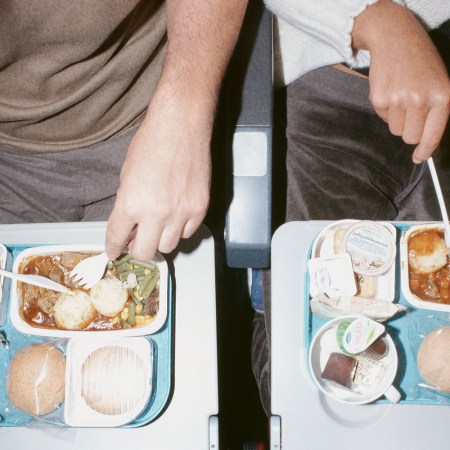Sorting through the minutiae of which airline and partner alliance to choose, and why, can be maddening. They all purport to be better, to offer more, to fly you farther in less time with more benefits and advantages than ever before. That’s not quite the case though, is it?
We’re living through a rough time in aviation history. Lounge access is being revoked, and mileage value is being reduced. Privileges are being stripped away, like so many superfluous winter layers in a TSA line.
Make no mistake about it, the blame rests with our airline overlords and the system that allows them to persist. These are enormous corporations who receive billions of bailout funds in times of need, and turn it into billions of profits by nickel-and-diming their loyal consumers once the crisis has passed. Pick your poison may never have been so apt, but here we are.
Which domestic airline and international airline alliance you choose could be decided upon by any number of factors. The credit card deal you couldn’t resist, or the city you live in, which may be dominated by the fleet of a single carrier who calls the airport its hub and home. In other instances, you may be able to be more proactive, and in either case, it’s important to know the real differences between what’s available.*

Star Alliance
U.S. Member: United
Loyalty Program: Mileage Plus
Status Tiers: Premier Silver, Premier Gold, Premier Platinum, Premier 1K
Total Number of Star Alliance Partners: 26
Key United Partners: Air Canada, Lufthansa, Turkish Airlines, Singapore Airlines
Star Alliance By The Numbers:
- Largest global passenger count: more than 762 million (2018)
- 23% of consumer air traffic (2015)
- 1,200 destinations in 195 countries
- 16,000 daily flights
Full Network: Aegean Airlines, Air Canada, Air China, Air India, Air New Zealand, All Nippon Airways, Asiana Airlines, Austrian Airlines, Avianca, Brussels Airlines, Copa Airlines, Croatia Airlines, Egyptair, Ethiopian Airlines, Eva Air, Lot Polish Airlines, Lufthansa, Scandinavian Airlines, Shenzhen Airlines, Singapore Airlines, South African Airways, Swiss International Air Lines, Thai Airways, Tap Air Portugal, Turkish Airlines, United Airlines
Best For: Star Alliance is the largest of the three, providing it with a robust collection of international partners who collectively serve the greatest share of total global traffic in terms of daily flights and annual passengers.
What Else to Know: Star Alliance became the first of the modern mega airline networks in 1997. Founding members included United, along with Air Canada, Lufthansa, Scandinavian Airlines and Thai Airways.
United has a deep set of European partners, providing a number of connection points and easy access to almost any given locale on the continent, as well as a handful of different partners in Asia. This provides an enormous set of connections, buoyed by Turkish Airlines and Singapore Airlines, each of which serves as its own behemoth global hub. With further partnerships in Japan, India, Africa, New Zealand and South America, every region on the map is covered.
Earning status on United can be completed via a combination of flight segments (PQFs, or Premier Qualifying Flights) and flight spend (PQPs, or Premier Qualifying Points), or reaching a higher total of PQPs.
The thresholds for each status level have recently been increased, but not as severely as Delta’s (see below), and the airline also offers a more advantageous upgrade system. With United, upgrades are applied via what they dub PlusPoints, which are earned by Premier Platinum and Premier 1K members. Top status members continue earning more points as they continue flying, providing a potential unlimited number of network upgrades if there’s availability to use them.
Star Alliance Gold status is conferred as soon as United’s Gold tier is reached. This provides network perks such as international lounge access — and the welcoming embrace of the airport showers which await — and priority boarding on member flights at an attainable stage.
A Definitive Guide to Surviving Budget Airlines
What to know ahead of your next $50 flight
SkyTeam
U.S. Member: Delta
Loyalty Program: SkyMiles
Status Tiers: Silver, Gold, Platinum, Diamond
Total Number of SkyTeam Partners: 19 (not including Russia’s Aeroflot, currently with a suspended membership)
Key Delta Partners: Aeromexico, Air France, KLM, Korean Air
SkyTeam By the Numbers:
- 2nd largest global passenger count: more than 630 million (2018)
- 20.4% of consumer air traffic (2015)
- 1,000 destinations in 163 countries
- 11,000 daily flights
Full Network: Aerolineas Argentinas, Aeromexico, Air Europa, Air France, China Airlines, China Eastern Airlines, Czech Airlines, Delta Air Lines, Garuda Indonesia, ITA Airways, Kenya Airways, KLM, Korean Air, Middle East Airlines, Saudia, TAROM, Vietnam Airlines, Virgin Atlantic, Xiamen Airlines
Best For: Delta is regarded as offering the best domestic flying experience in combination with its aircraft and onboard product, as well as reliability. Two major continental European partners provide a deep set of connections in that part of the world.
What Else to Know: SkyTeam was formed in 2000, with original members including Delta, AeroMexico, Air France and Korean Air. As the final of the three alliances to form, it at first seemed to cobble together partnerships via the remaining major players, but was soon buoyed by the merger of Air France and KLM, providing a tag-team of core European partners.
Thanks to its partnership with Virgin Atlantic, SkyTeam also benefits from having an in-house U.K. airline. This combination is the best of both worlds for U.K. and Europe-bound American travelers, as you don’t need to route yourself through London to travel to Europe thanks to KLM and Air France, but you do have benefits and options when the U.K. is your actual destination.
Delta has shifted away from a system of earning status via a combination of flight segments and flight spend to a pure spend tally of MQDs, or Medallion Qualification Dollars, which can be buoyed by further spending across its credit cards and travel wings.
One of the major drawbacks to having status with Delta is that the airline provides a maximum of four global upgrade certificates per year. Each of these only guarantees a transfer up one class, e.g., economy to premium economy rather than economy to business, with that second upgrade being based on a second round of space availability.
While every airline has increased its earning tiers since the pandemic, Delta has caught the most flak for their recent announcement regarding wholesale changes to lounge access and enormous increases to status thresholds. As of the time of this writing, the airline was said to be considering adjusting its proposed changes based on the negative feedback they received.
SKyTeam Elite Plus membership is conferred once you reach Delta’s Gold tier, enabling international lounge access and priority boarding and baggage handling on network flights.

Oneworld
U.S. Member: American Airlines
Loyalty Program: AAdvantage
Status Tiers: Gold, Platinum, Platinum Pro, Executive Platinum
Total Number of Oneworld Partners: 15 (including one partial partner & one added by 2024)
Key American Partners: British Airways, Cathay Pacific, Qantas, Qatar Airways
Oneworld By The Numbers:
- 3rd largest global passenger count: more than 528 million (2018)
- 17.8% of consumer air traffic (2015)
- 900 destinations in 170 territories
- 11,000 daily flights
Full Network: Alaska Airlines, American Airlines, British Airways, Cathay Pacific, Fiji Airways (Oneworld Connect) Finnair, Iberia, Japan Airlines, Malaysia Airlines, Oman Airways (2024), Qantas, Qatar Airways, Royal Air Maroc, Royal Jordanian, SriLankan Airlines
Best For: American operates the most flights of any single domestic carrier and owns the largest fleet, so there’s almost always a good route to be found to connect into the Oneworld network, particularly for those who frequent its core partner destinations.
What Else to Know: American Airlines, British Airways, Cathay Pacific and Qantas joined forces to form Oneworld in 1999. Oneworld benefits from having core partners in the United Kingdom, Hong Kong, Australia and Japan, and is particularly well covered across the Middle East. However, it doesn’t have any direct partnership in South America, and its European hubs are not as robust as other alliances.
For American Airlines fliers, AAdvantage uses a Loyalty Points system in tandem with its four main status tiers. This offers a choice of how to apply benefits, and additional perks for those who reach higher benchmarks. Its in-house status transfers to three Oneworld status piers (either Ruby, Sapphire or Emerald) for partner benefits and lounge access. Top-tier partner status is conferred to American’s third-tier (Platinum Pro), whereas in the other two alliances, it’s achieved once reaching second-tier status (Gold for Delta, Premier Gold for United).
Sometimes, try as you may, you’ll be forced to abandon your alliance and go off network. In the case of Emirates Airlines, an independent airline beyond a partnership with JetBlue, that won’t be a bad thing, because flying Emirates is never a bad thing. But your loyalty to them isn’t transferable to one of the major U.S. carriers.
Then there are the micro-regionals, the budget carriers and the unaffiliated, led, of course, by Southwest Airlines. All of these have their place, too, and if you’re predominantly traveling regionally between two cities where an unaffiliated airline offers direct routes that may be underserved or ignored by the major carriers, then it makes perfect sense to continue flying with them.
The question of which U.S. carrier to choose, and which international alliance to feed into as a result, doesn’t have a single correct answer. What it boils down to is choosing which one serves your local airport the best, providing you with the most benefits and best onboard experience, per your personal preference.
*(To answer the obvious question you may have, the author splits his alliance loyalty between United/Star Alliance and Delta/SkyTeam, with Premier 1K and Diamond status respectively. Though because he is an adamant carry-on only traveler, he wastes one of the proffered perks, multiple free checked bags.)
This article was featured in the InsideHook newsletter. Sign up now.

























